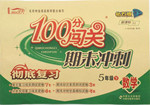题目内容

HOW TO BOOK
![]() By phone:
By phone:
Call Ticketmaster 24 hr Booking Line
on 0844 847 2484
![]() Online:
Online:
www.PalaceandOperaHouse.org.uk
or www.ticketmaster.co.uk
![]() In Person:
In Person:
The Palace Theatre Ticket Centre,
Oxford Street. Manchester, Ml 6FT
(Mon Sat 10am-8pm)
![]() By Post:
By Post:
Stating the performance and choice of seats , enclosing(附寄)a cheque , postal order ,or your credit card details to The Palace Theatre Ticket Centre , Oxford Street , Manchester , Ml 6FT . Please enclose a stamped addressed envelope.
![]() Save pounds on tickets NOW!
Save pounds on tickets NOW!
Join Live Nation’s Card for just £30 a year and enjoy a whole range of discounts and benefits .You’ll save money from the first time you use your Live Card—not just on tickets ,but on programmes and reduced booking fees . Live Card members often join the audience on opening nights or enjoy generous discounts throughout the run of a show.
Call 0844 499 6699 to join Live Card today.
![]()
By getting together as a group of 10 or more you can save money on tickets for your favourite shows.
Group bookers benefit from a direct free telephone booking line, and don’t pay booking fees .Invitations to parties and book-now-pay-later programmes are all part of our great service to group bookers. Join the hundreds of people already taking advantage of our group booking.
Call 0800 587 5007 to talk to one of our group booking assistants about your group visit to the Palace Theatre or Opera House.
For further information please call 0161 245 6609.
64.If you want to join Live Card to save money on tickets, you can call .
A.0844 847 2484 B.0800 587 5007
C.0844 499 6699 D.0161 245 6609
65.How can you pay for a ticket when you book by post?
A. By visiting the website of a post office.
B. By going to your local bank in person.
C. By enclosing your Live Card in an envelope.
D. By providing your credit card information.
66.What benefit can group bookers enjoy according to the text?
A. Delayed payment for tickets. B. Invitations to opening nights.
C. Reduced booking fees by phone D. Generous discounts on tickets.
CDA

 100分闯关期末冲刺系列答案
100分闯关期末冲刺系列答案